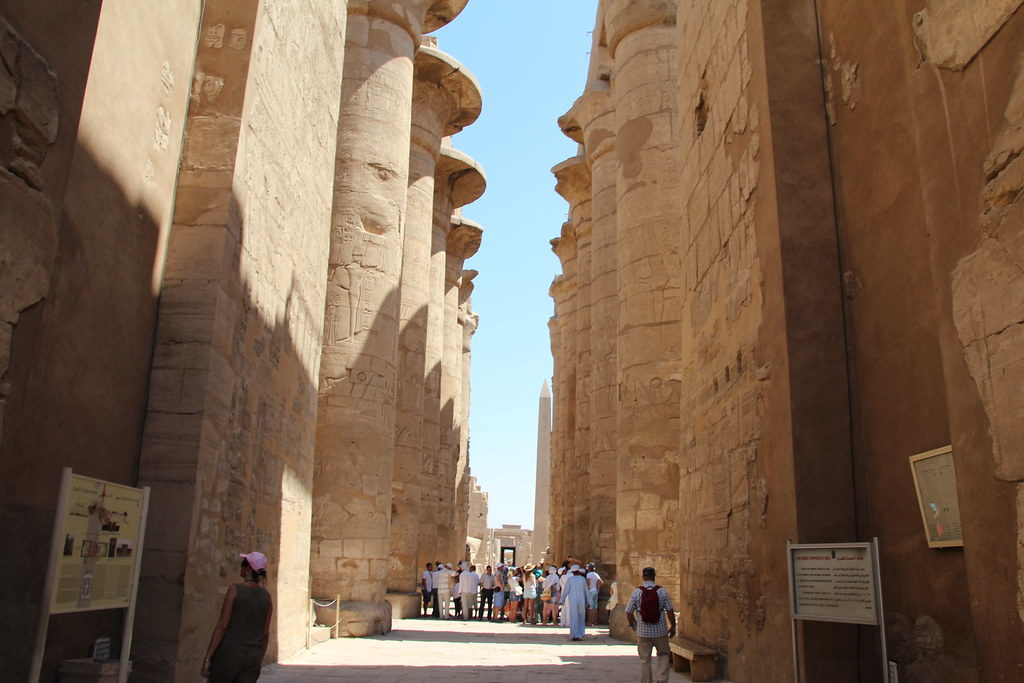
Karnak Temple, Luxor, Egypt, is made of large structures built out of resistant stones that have endured more centuries than you can even count. Tall sphinxes, narrow alleys and high walls of the same brown color lining the perimeter of the place. Intricate carvings of hieroglyphics decorating every surface. In Karnak Temple, you can truly experience how people lived in ancient Egypt under the blue sky and the hot weather.
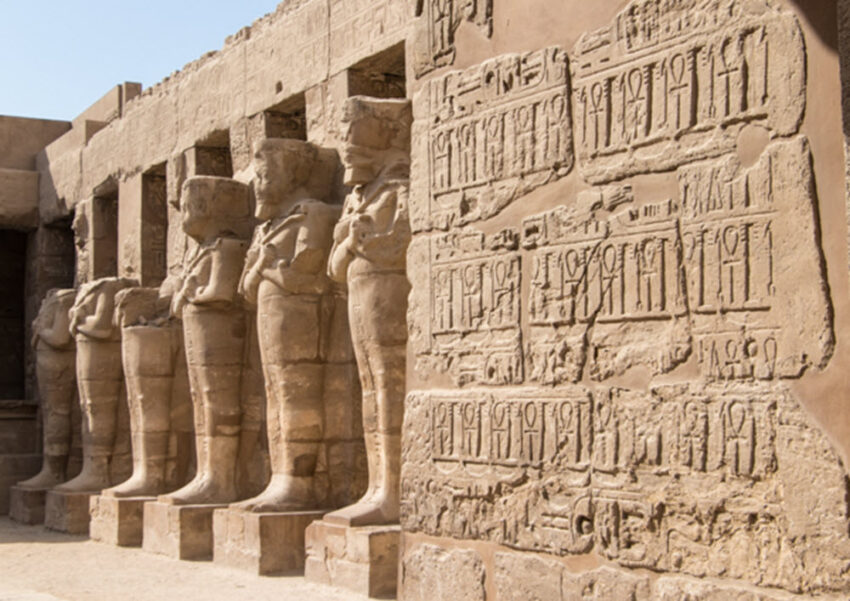
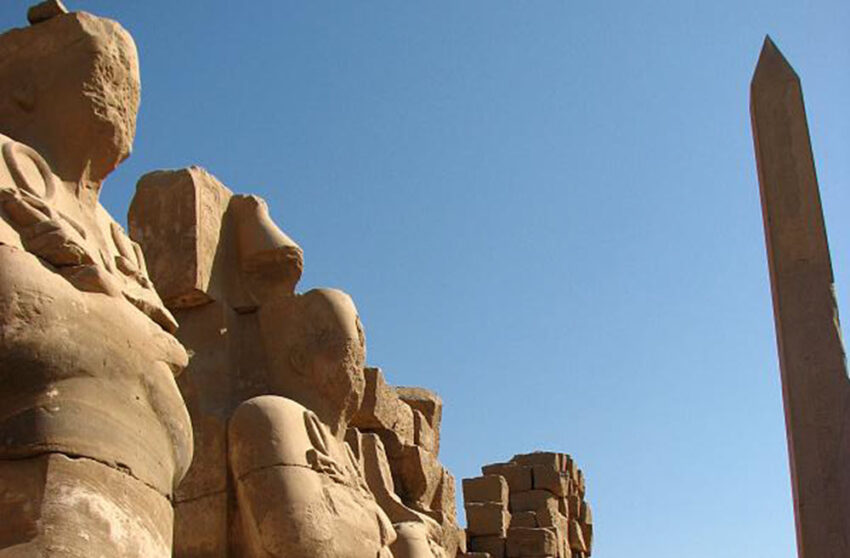
Activity/Place Highlights
Karnak Temple was built as a tribute honoring the ancient pharaohs’ hunt for eternal life. Even though the Giza pyramids immediately come to our minds when we think about Egypt, they were just tombs for previous rulers of the Old Kingdom. Meanwhile, the Karnak Temple gives you a better idea of how life in ancient Egypt used to be like. This temple’s influence lasted for around 1300 years. Besides, it was central to the power of New Kingdom pharaohs such as Rameses II and Seti I.
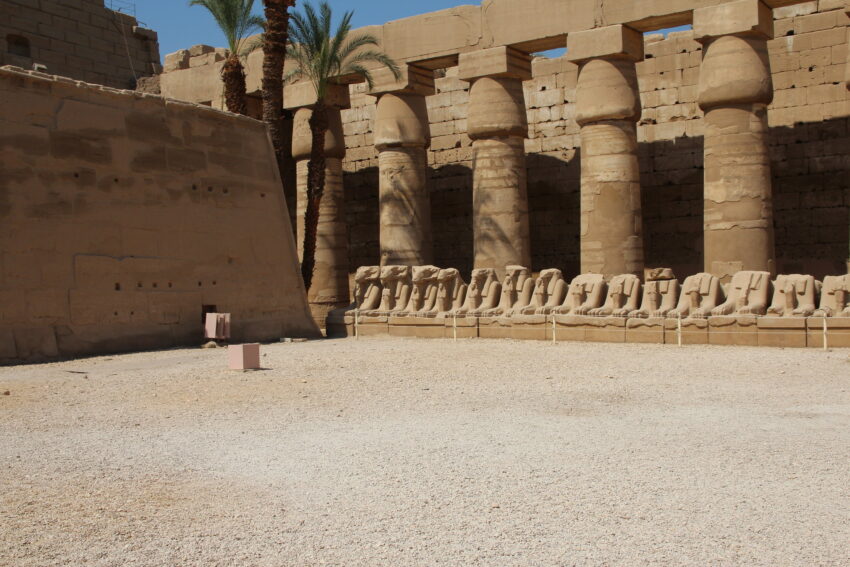
The Great Hypostyle Hall
The main attraction in Karnak Temple is the Great Hypostyle Hall in the Precinct of Amun. This 6000-square-meter structure resembles a forest where trees were suddenly replaced by big stone pillars. Each one of the 136 columns is 23 meters tall and 15 meters in circumference. You will notice that some of them have been renovated due to the long period of time they have withstood.
However, some of the pillars even maintain hints of their original coloring that dates back to 1300 BC. They still keep the fascinating carved hieroglyphics that decorate them. In fact, you can still see the intricate bas-relief images of Egyptian gods, like Amun to whom this part of the temple was dedicated.
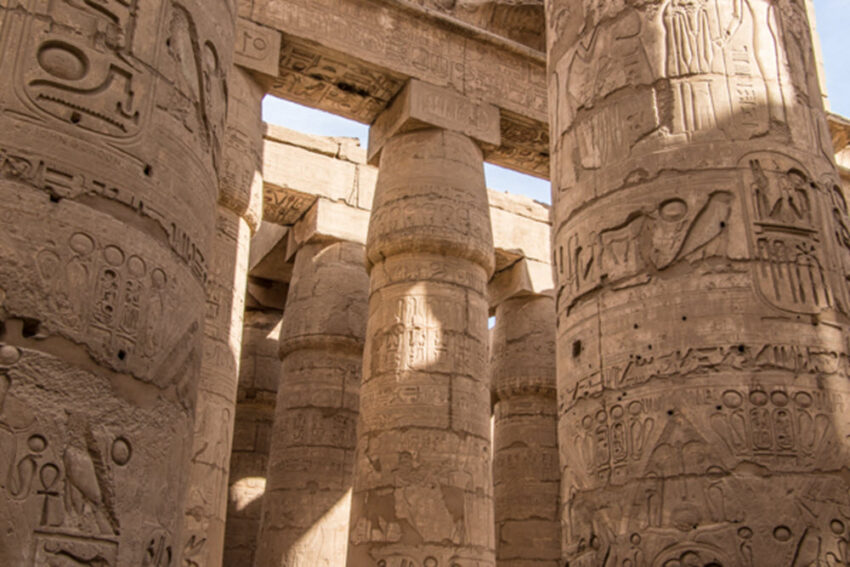
Currently, the entire hall is not roofed over, and not every lintel is as visible as it was back in the days of the pharaohs. The interior was once dark with streaks of light coming through grilled windows in the central aisle. Still, you can easily imagine pharaohs visiting the temple to admire the same bas-relief gods that you will be looking at. It’s also easy to imagine the processions of priests going through the halls as you walk through them.
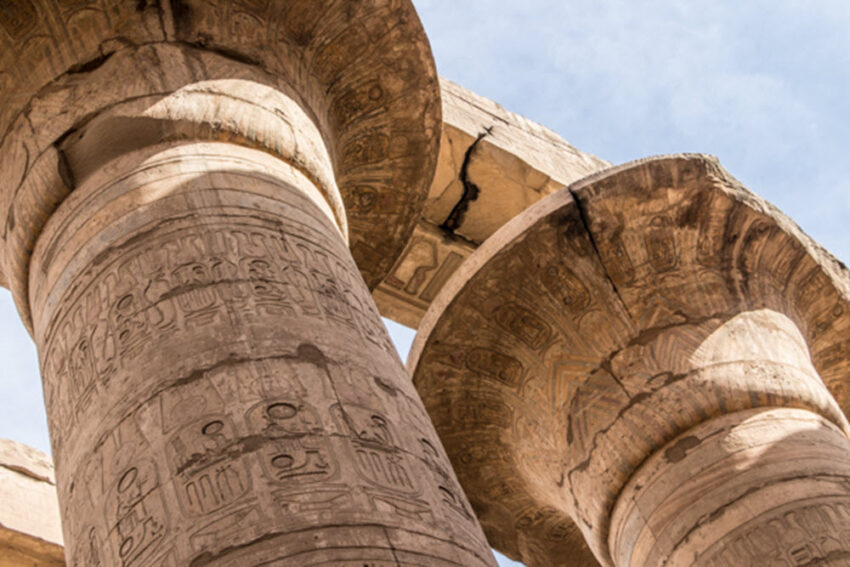
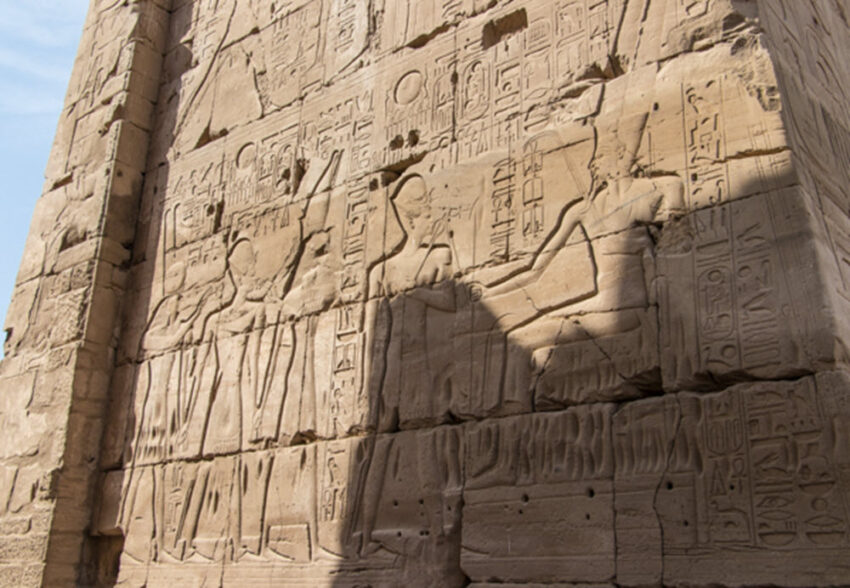
The Three Temples within Karnak Temple
The Karnak Complex holds three different temples within it. The Precinct of Amun is the largest and most complete out of the three. Within this temple, the Great Hypostyle Hall is the most impressive section. Sadly, the other two temples, the Precinct of Montu and the Temple of Mut, are ruins for the most part. Nevertheless, there are still several intriguing places you can visit.
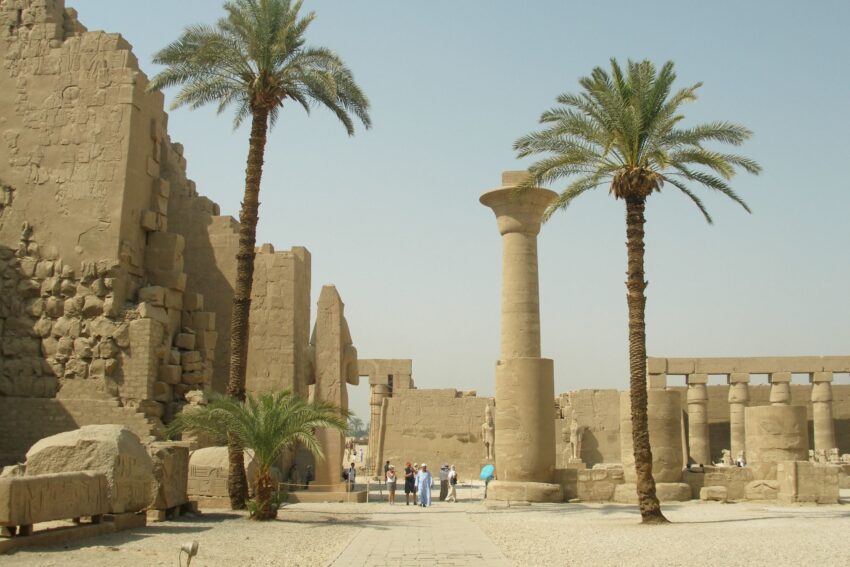
The Pylons
Right at the entrance, you will walk down a captivating avenue of ram-headed sphinxes. This leads you to the first pylon, a 43-meter-high wall with a breach in the middle to get through. Beyond the wall, you will find a courtyard with a gigantic statue of Ramesses II and a small temple dedicated to Ramesses III, surrounded by sphinxes and decorated with tall sculptures inside.
After the second pylon, you could spend several days exploring the rest of Karnak Temple and its pillars. Try visiting the complex alongside a local guide. This way you can avoid the temple guards that repeatedly ask for baksheesh, a small tip or alms.
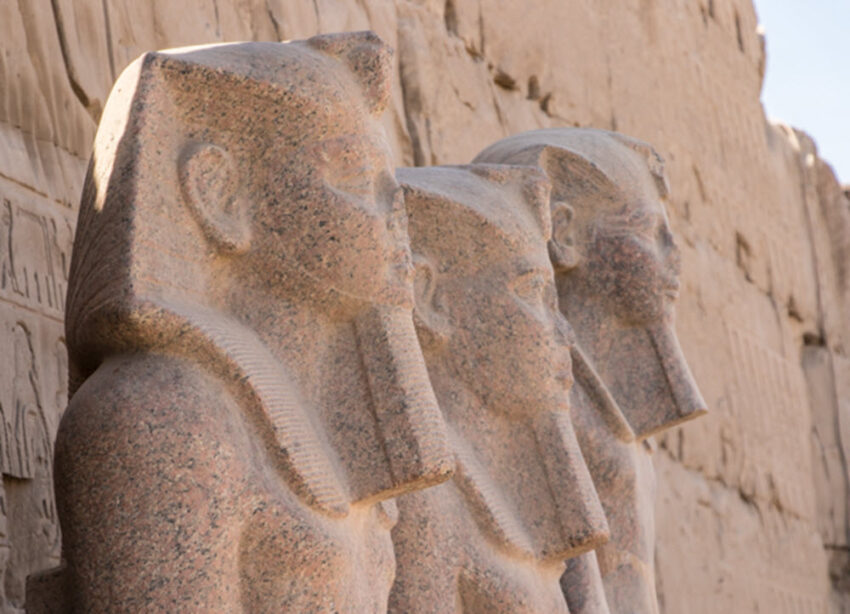
The Avenue of Sphinxes
If you walk along the Avenue of Sphinxes, which used to be the route of a procession to Amun, you can go back to town. Currently, the avenue disappears for a small section on the outskirts of Luxor since several sphinxes are missing. But eventually, as you reach the back gate to Luxor Temple, you can get back to it. At this point, more stunning sphinxes welcome you to this impressive part of the avenue, joining both the Luxor and Karnak temples just like in the time of the pharaohs.
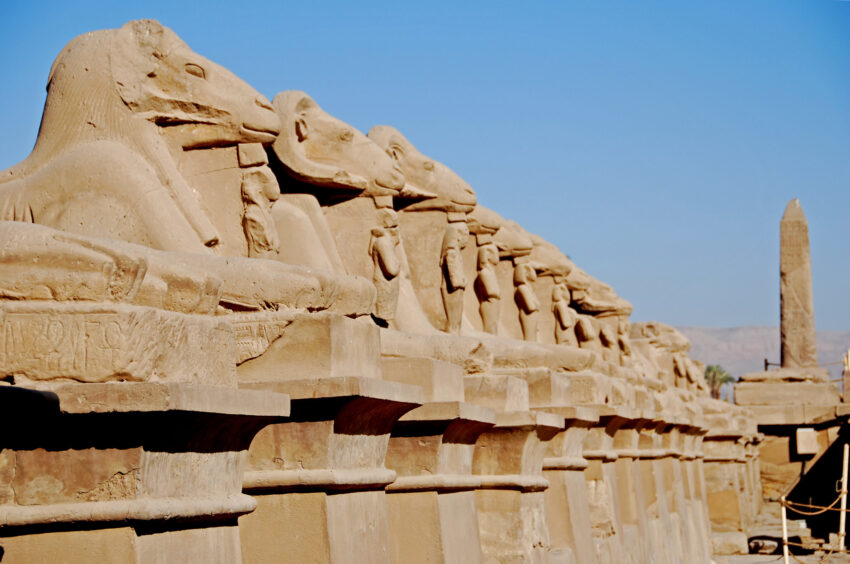
When to go
Since this is one of the most popular attractions in Luxor, Karnak gets quite crowded during the day. For this reason, and if you want to enjoy your visit peacefully, try arriving when the doors open at 6 a.m. Take the exact entrance money you will need since the gates rarely have any change when the place has recently opened. Then, you can leave at 9 a.m. when the big crowds start to arrive.
Even though the heat is kind of annoying, you can come back at 3 p.m. and find the temple just as calm as it was in the morning. However, now you will experience a new perspective of the complex. In the morning, don’t forget to mention at the gate that you will come back, and try using the same ticket in the afternoon.
How to get there
There are a few ways you can reach Luxor, such as taking an internal flight or the convenient night train from Cairo. I recommend the famous hotel Winter Palace in the center of Luxor. But if you want to be closer to Karnak, the Nile Hilton Hotel might be a better option for you.
Inside Information
Haggling is a must in Egypt. You can hire official guides at the ticket office, but settle on a price first. Move around the city taking taxis and, even though they’re pretty cheap, you can still bargain the price. A horse-drawn calèche is also an option. However, make sure to choose healthy-looking horses and don’t let the driver start galloping them.
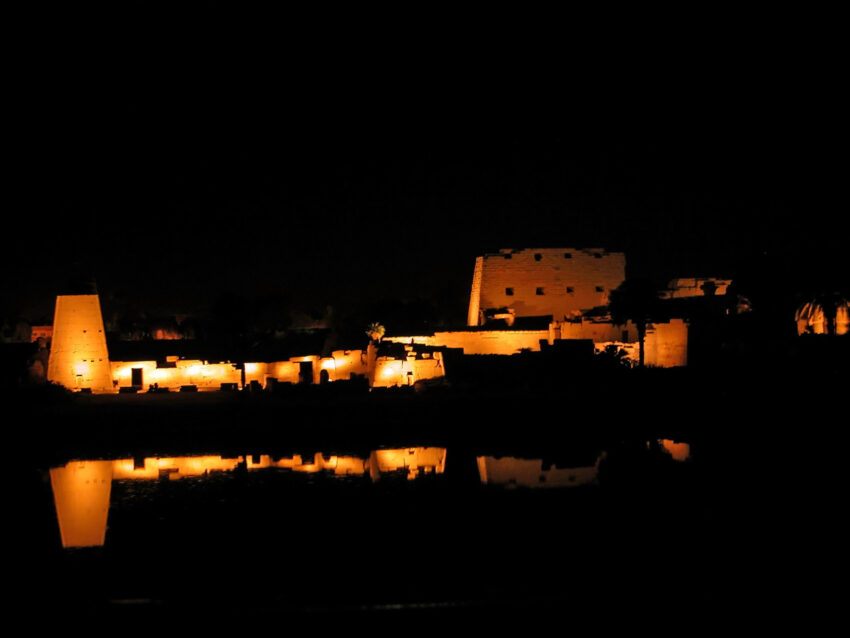
Other Nearby Attractions
The Valley of the Kings
Finally, don’t forget to visit the Valley of the Kings across the Nile to wrap up your journey in this astonishing city. The Valley comprises 63 tombs of ancient pharaohs in miles of tunnels and chambers underground. You can find this World Heritage Site on the West Bank of the Nile, oposite the city of Luxor.
The Valley of the Kings has a strict No Photography policy, however, you can purchase a permit that allows you to take as many pictures as you want (without flash) on three tombs of your choice. Finally, it is absolutely worth it to pay extra and enter the Tomb of Tutankhamun, where you can see his mummified body. This site is certainly the most insteresting within Luxor.
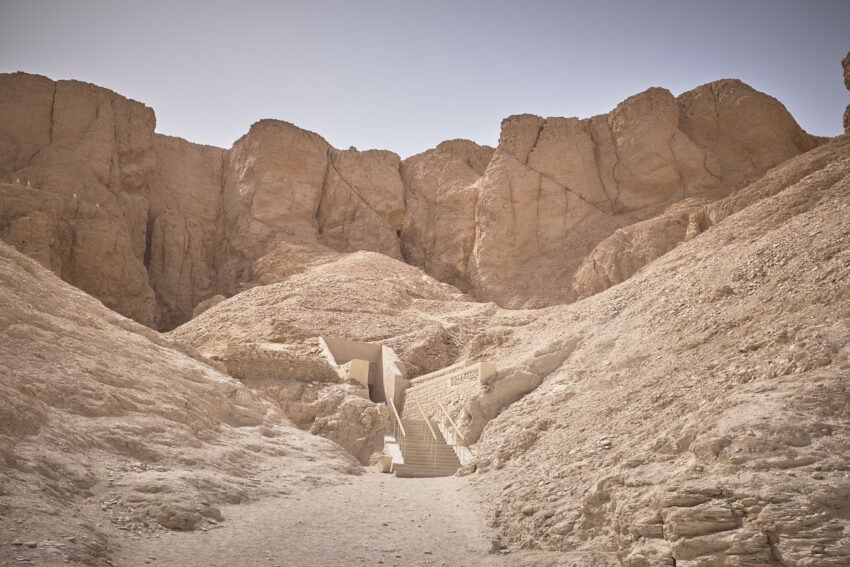
If you loved this article or found it useful, don’t forget to share it with your adventurous and travel-hacking friends! If you want more posts like this, follow us on Youtube, Instagram, Pinterest, Twitter or Facebook and subscribe to our newsletter!

